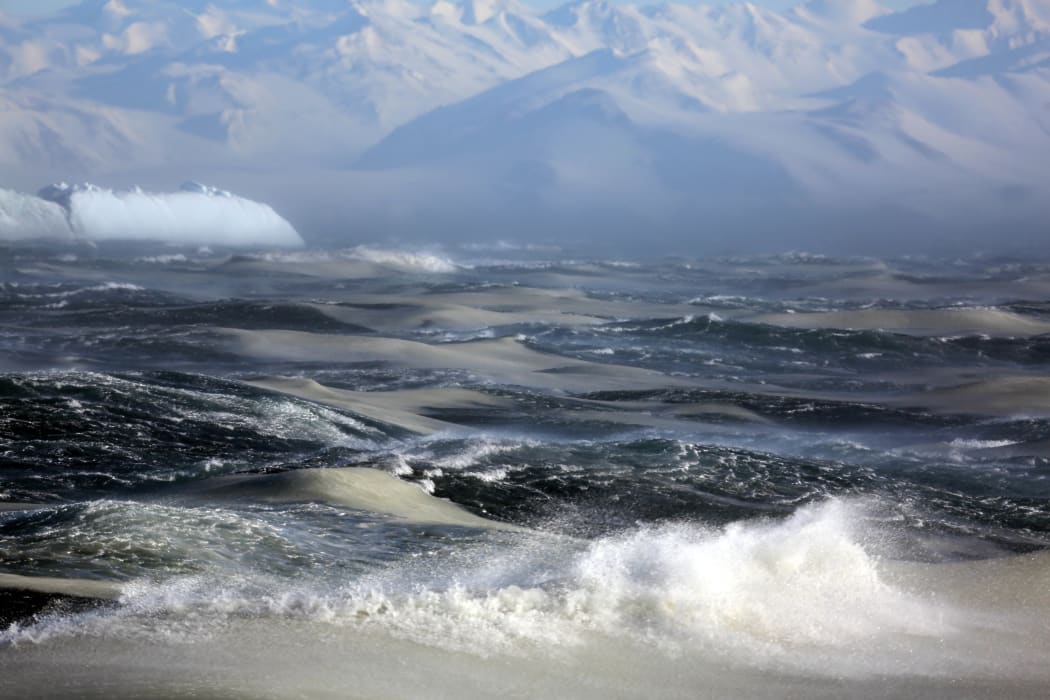Phytoplankton – single-celled plants that float on the surface of the world’s oceans – have been around for millions of years and account for half of the planet's total biological productivity. They leave a clear fossil footprint which allows palaeontologists to trace past environmental change and extinction rates.

James Crampton Photo: Veronika Meduna / RNZ
Palaeontologist James Crampton of GNS Science and Victoria University discusses his research on phytoplankton pulses in the Southern Ocean, and what they reveal about past environmental changes.

Diatom blooms occurring in newly forming frazil sea ice in the stormy waters of the Ross Sea. Photo: Rob Dunbar

